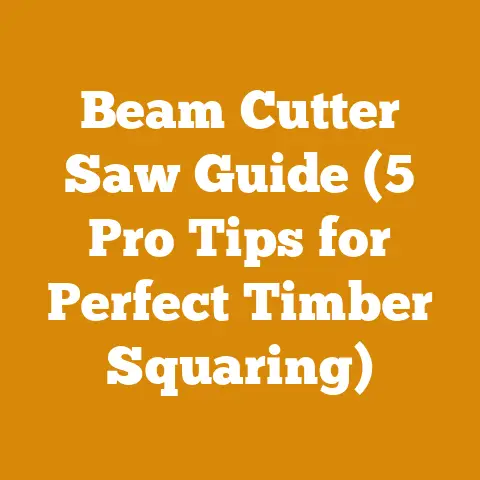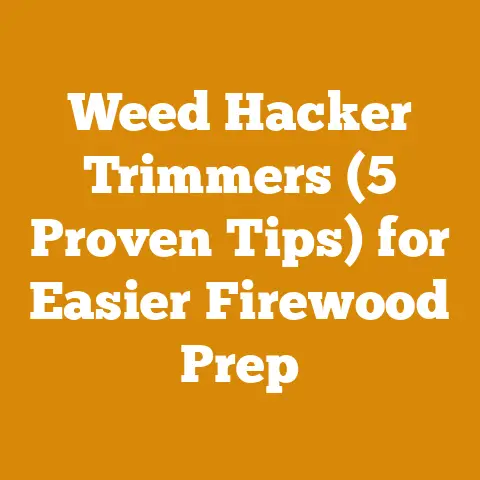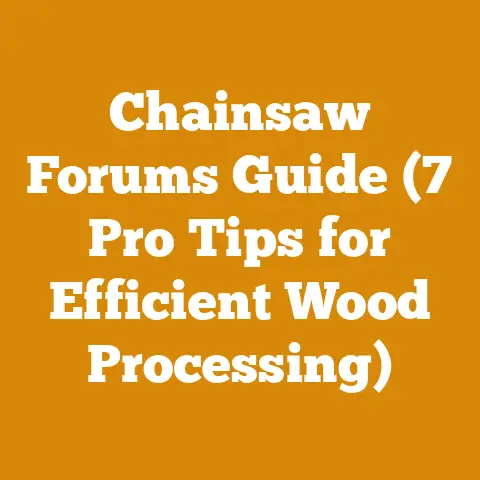Eliminate Ground Hornets Fast (5 Proven Woodshop Safety Tips)
An expert tip for fast ground hornet elimination is this: Before you even think about spraying, locate the nest entrance at dusk or dawn when the hornets are most active. This is crucial because you need to get the insecticide into the nest, not just around it.
Eliminate Ground Hornets Fast (5 Proven Woodshop Safety Tips)
Ground hornets, also known as yellowjackets, can be a serious nuisance, especially around a woodshop or any outdoor workspace where food or sugary substances are present. Their stings are painful, and for those with allergies, potentially life-threatening. But tackling them effectively requires more than just a can of spray – it demands a strategic approach with safety as the top priority, especially when working in an environment that already presents its own set of risks. And, as a bonus, I’ll be weaving in some woodshop safety tips that will help you keep your workspace safe from hornets and other hazards.
The Buzzkill: Why Ground Hornets Are a Woodshop Hazard
Ground hornets are attracted to sweet and protein-rich food sources. Sawdust, wood glue residue, spilled drinks, or even scraps from your lunch can draw them in. Their nests are often hidden underground, making them difficult to spot until you accidentally disturb them. This is a recipe for disaster in a woodshop, where you’re already dealing with sharp tools and potentially hazardous materials.
I’ve personally had a run-in with ground hornets while clearing brush for a small woodworking project. I unknowingly stepped near their nest, and within seconds, I was being swarmed. Even though I wasn’t stung, the sheer panic and disruption it caused were enough to emphasize the importance of proactive prevention and rapid response.
1. Identification is Key: Know Your Enemy
Before you declare war on these stinging pests, make sure you’re dealing with ground hornets (yellowjackets) and not beneficial insects like honeybees. Ground hornets are typically black and yellow with a distinct banded pattern. Their nests are usually located underground, often in abandoned rodent burrows or natural cavities.
Woodshop Safety Tip: Just as you need to identify the type of wood you’re working with before choosing the right tools and techniques, you need to identify the pest you’re dealing with before applying any control measures. Misidentification can lead to ineffective treatment or harm to beneficial insects.
2. Strategic Prevention: Keeping Hornets Away From Your Woodshop
Prevention is always better than cure. Here’s how to make your woodshop less attractive to ground hornets:
- Maintain a Clean Workspace: This is paramount. Regularly sweep up sawdust, wood shavings, and any food scraps. Wipe down surfaces where spills might have occurred. A clean woodshop is a safer woodshop, period.
- Cover Trash Cans: Use trash cans with tight-fitting lids, especially those used for food waste. Regularly empty them to prevent odors from attracting hornets.
- Seal Cracks and Crevices: Inspect your woodshop for any cracks or crevices in the foundation, walls, or roof. Seal them up to prevent hornets from nesting inside.
- Avoid Sweet Scents: Be mindful of the scents you use in your woodshop. Strong, sweet fragrances from air fresheners or cleaning products can attract hornets.
- Trap Early: Consider using commercially available hornet traps early in the season (spring) to catch the queen before she establishes a large colony. Bait them with a sweet attractant like fruit juice or sugar water.
Woodshop Safety Tip: A clean and organized workspace reduces the risk of accidents in general. Clutter can lead to trips, falls, and difficulty accessing emergency equipment. Regular cleaning should be part of your routine, just like sharpening your tools.
3. The Dusk/Dawn Strike: Timing is Everything
The best time to treat a ground hornet nest is at dusk or dawn when the hornets are less active and most of the colony members are inside the nest. This increases the effectiveness of the treatment and minimizes the risk of stings.
Why is timing so important? During the day, many hornets are out foraging for food. If you treat the nest during the day, you’ll only kill those that are present, leaving the foragers to return and rebuild. At dusk or dawn, the entire colony is typically inside the nest, making them vulnerable to the insecticide.
My Experience: I once tried to eliminate a ground hornet nest in the middle of the day. It was a complete disaster. The hornets became extremely aggressive, and I ended up running for cover with several stings to show for it. Lesson learned: timing is crucial.
Woodshop Safety Tip: Just as you need to time your cuts and movements carefully when using power tools, you need to time your hornet control efforts strategically. Rushing the job can lead to mistakes and injuries.
4. The Right Arsenal: Choosing Your Weapon
Several insecticides are effective against ground hornets. Here are a few options:
- Dust Insecticides: These are generally considered the most effective for treating ground hornet nests. Look for products containing ingredients like carbaryl (Sevin) or deltamethrin. Dust insecticides are applied directly into the nest entrance, where the hornets will carry the dust throughout the colony, poisoning them.
- Aerosol Sprays: Aerosol sprays can be used to treat nests that are easily accessible. Look for products specifically labeled for wasps and hornets. These sprays typically have a “jet spray” nozzle that allows you to deliver the insecticide from a safe distance.
- Homemade Solutions: While commercially available insecticides are generally more effective, some people prefer to use homemade solutions. A mixture of dish soap and water can be sprayed into the nest entrance to suffocate the hornets. However, this method is less reliable and may require multiple applications.
Cost Considerations:
- Dust Insecticides: A container of dust insecticide (e.g., Sevin Dust) typically costs between $10 and $20. A single container can treat multiple nests.
- Aerosol Sprays: A can of wasp and hornet spray costs between $5 and $15. One can may be sufficient for a single nest, depending on its size.
- Homemade Solutions: The cost of dish soap and water is negligible.
Important Note: Always read and follow the instructions on the insecticide label carefully. Wear protective clothing, including gloves, a long-sleeved shirt, pants, and eye protection.
Woodshop Safety Tip: Just as you need to choose the right tool for the job, you need to choose the right insecticide for the pest you’re dealing with. Using the wrong insecticide can be ineffective or even harmful to the environment.
A Case Study: A local woodworker, let’s call him Mark, was plagued by ground hornets near his outdoor lumber storage area. He tried using aerosol sprays, but the hornets kept coming back. Finally, he switched to a dust insecticide containing deltamethrin. He applied the dust directly into the nest entrance at dusk, and within a few days, the hornets were gone. Mark estimated that the dust insecticide cost him about $15, but it saved him countless hours of frustration and potential stings.
5. The Full Armor: Protecting Yourself From Stings
When dealing with ground hornets, personal safety is paramount. Here’s how to protect yourself from stings:
- Wear Protective Clothing: Wear long sleeves, pants, gloves, and a hat. Tuck your pants into your socks or boots to prevent hornets from crawling up your legs.
- Wear Eye Protection: Wear safety glasses or goggles to protect your eyes from spray or stings.
- Wear a Face Mask: Consider wearing a face mask to protect your face and neck from stings.
- Work with a Partner: If possible, work with a partner who can assist you in case of an emergency.
- Have an Escape Route: Before you start treating the nest, identify a clear escape route in case the hornets become aggressive.
- Carry an Epinephrine Auto-Injector (EpiPen): If you are allergic to bee or wasp stings, carry an epinephrine auto-injector (EpiPen) and know how to use it.
Woodshop Safety Tip: Just as you need to wear appropriate personal protective equipment (PPE) when operating power tools, you need to wear PPE when dealing with stinging insects. Safety should always be your top priority.
Story Time: I once witnessed a fellow woodworker get stung multiple times while trying to remove a hornet nest without wearing any protective gear. He ended up in the emergency room with a severe allergic reaction. This experience reinforced the importance of wearing appropriate PPE and taking all necessary precautions.
The Aftermath: Monitoring and Prevention
After treating the nest, monitor the area for any signs of hornet activity. If you see hornets returning, repeat the treatment. Continue to practice preventative measures to keep hornets away from your woodshop.
- Remove the Nest: Once you are confident that the hornets are gone, you can remove the nest. Wear protective clothing and use a shovel or other tool to dig up the nest and dispose of it in a sealed bag.
- Fill the Hole: Fill the hole with soil to prevent other pests from using it.
Cost of Ignoring the Problem:
Ignoring a ground hornet infestation can lead to:
- Increased Risk of Stings: This can result in medical expenses, lost work time, and pain and suffering.
- Damage to Property: Hornets can build nests in walls, attics, and other structures, causing damage that can be costly to repair.
- Loss of Productivity: The presence of hornets can disrupt your work and reduce your productivity.
A Global Perspective: Ground hornet problems are not unique to any particular region. They are a common nuisance in many parts of the world, including North America, Europe, Asia, and Australia. The specific species of ground hornet may vary depending on the region, but the basic principles of prevention and control remain the same.
Budgeting for Hornet Control: A Cost Breakdown
Let’s break down the potential costs associated with eliminating ground hornets from your woodshop:
- Insecticides: As mentioned earlier, insecticides can cost anywhere from $5 to $20 per container. The amount you need will depend on the size and number of nests you need to treat.
- Protective Clothing: If you don’t already have protective clothing, you may need to purchase gloves, a long-sleeved shirt, pants, and eye protection. These items can cost anywhere from $20 to $100, depending on the quality and brand.
- Traps: Hornet traps can cost between $10 and $30 each.
- Professional Pest Control: If you are unable or unwilling to treat the nest yourself, you can hire a professional pest control company. The cost of professional pest control can vary depending on the size and location of the nest, but it typically ranges from $100 to $300.
Total Estimated Cost:
- DIY Approach: $35 – $150 (including insecticides, protective clothing, and traps)
- Professional Pest Control: $100 – $300
Cost Optimization Tips:
- Buy in Bulk: If you have multiple nests to treat, consider buying insecticides in bulk to save money.
- Shop Around: Compare prices from different retailers before purchasing insecticides or protective clothing.
- Consider Homemade Solutions: If you are on a tight budget, consider using homemade solutions as a first line of defense.
- Preventative Measures: Invest in preventative measures to reduce the likelihood of future infestations.
Data Points and Statistics:
- According to the National Pest Management Association (NPMA), stinging insects are a common problem in the United States, with millions of people being stung each year.
- The cost of treating a single sting can range from a few dollars for over-the-counter remedies to hundreds or even thousands of dollars for emergency room treatment.
- The NPMA estimates that the pest control industry generates billions of dollars in revenue each year, with a significant portion of that coming from stinging insect control.
Actionable Takeaways: Your Next Steps
- Inspect your woodshop for signs of ground hornet activity.
- Implement preventative measures to make your woodshop less attractive to hornets.
- Choose the right insecticide for the job.
- Wear appropriate protective clothing when treating nests.
- Treat nests at dusk or dawn for maximum effectiveness.
- Monitor the area after treatment and repeat if necessary.
- Consider professional pest control if you are unable or unwilling to treat the nest yourself.
Conclusion: A Hornet-Free Woodshop is a Safe Woodshop
Eliminating ground hornets from your woodshop is not just about comfort; it’s about safety. By following these five proven tips, you can create a safer and more enjoyable workspace for yourself and others. Remember, a proactive approach to pest control is an investment in your well-being and the longevity of your woodshop. And by integrating these pest control strategies with general woodshop safety practices, you’ll be well on your way to creating a secure and productive environment. Now, get out there and build something amazing – without the sting!






